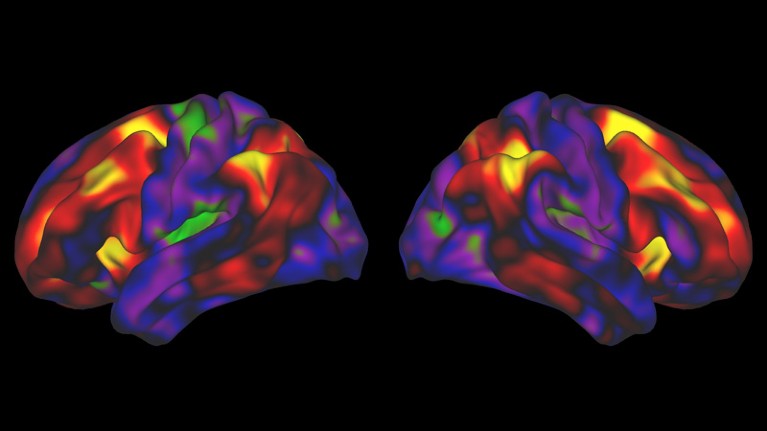- RESEARCH HIGHLIGHT
A child’s memory prowess is revealed by brain patterns

Warm colours such as yellow indicate brain regions that are especially active in children with strong working memories. The diagram is a group average of images from many children. Credit: Richard Watts and Monica Rosenberg
Access options
Access Nature and 54 other Nature Portfolio journals
Get Nature+, our best-value online-access subscription
$29.99 / 30 days
cancel any time
Subscribe to this journal
Receive 51 print issues and online access
$199.00 per year
only $3.90 per issue
Rent or buy this article
Prices vary by article type
from$1.95
to$39.95
Prices may be subject to local taxes which are calculated during checkout
Nature 582, 11 (2020)
doi: https://doi.org/10.1038/d41586-020-01575-3



